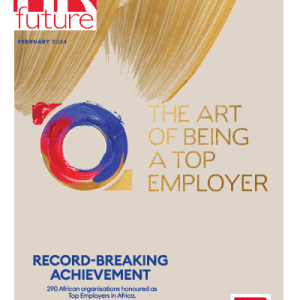It can be surprisingly easy for businesses and HR departments to overlook the financial wellness of employees. In a sense, all that’s really necessary on this front is to make sure that employees are paid properly, that they understand their pay slips and withholdings, and that they’re aware of their benefits packages. The rest of their financial wellness is ultimately up to them. At the same time, though, it is in your best interest as an HR professional or business owner to do what you can to help.
An employee who’s in more comfortable shape financially will typically be more likely to remain satisfied in his or her job. Furthermore, if said employee feels that the company has played an active role in promoting financial wellness, he or she will be more likely to have a sense of loyalty, and will reflect well on the company. For these reasons, we decided to provide a few ideas for how to help craft a financial wellness plan for your employees.
Teach basic personal finance
Particularly if your company has some younger employees, it can be best to start with some instruction regarding basic personal finance — or at least to make such instruction available. This doesn’t have to be particularly in depth, but CNBC has done a nice job of outlining some of the topics worth covering with younger professionals. Ideas like living on less, saving early, managing risks, and learning to budget are all fairly fundamental. But they’re the sorts of things people need to learn when they’re just starting their professional lives, and by providing some education in these areas you can help younger employees to start off on the right track.
Explain pay in detail
This is a simple point, but a vital one: Make sure employees are fully and completely aware of how their pay works. This includes how much they make, how much may be withheld for taxes, how much goes toward benefits, what the company bonus and promotion structures look like, and anything else related to pay.
First and foremost, it’s a matter of basic fairness and transparency to make this information available. Additionally though, being as thorough as possible in explaining all of this can help employees to plan more effectively for their own financial wellness
Provide an overview of investment options
How your employees go about personal investment is up to them. Furthermore, once they decide how to invest their income, they should seek professional advice elsewhere. However, part of helping with financial wellness can mean providing a basic overview of some popular options, such as:
- Stocks – Stocks are among the most popular forms of investment, and per a detailed analysis posted on Medium, they tend to offer the best return over a long period of time. This should be covered with employees, along with proper acknowledgment of risks and an explanation of numerous ways in which stocks can be traded;
- Real Estate – Though some see real estate investment almost as another job, it’s another popular option, and one that the same Medium post suggested can provide the next highest rate of return after stock investment. Here again it’s important to discuss risks and different methods, but real estate investment is worth mentioning;
- Forex – While stocks may be more conventional in many employees’ eyes, forex is the largest and most liquid investment market on earth, according to a helpful overview by FXCM. Synonymous with the currency trade, forex is typically more of a day trading market in which currency pairs are bought and sold constantly. However it’s still a space in which plenty of investors profit over time, and thus another option worth discussing with employees; and
- Commodities – Commodities comprise a whole market unto themselves, but altogether they make for popular and often profitable long-term investments. It’s worthwhile to go over some of the major investable commodities (crude oil, gold, agricultural products, etc.) and discuss how employees might invest in them should they decide to do so.
Again, you don’t want to advise your employees that they should invest in any one of these markets, or how to do so. But providing a foundation of knowledge they can build on when putting together their own portfolios can be a helpful service.
Go over retirement planning in detail
While it’s a good idea to provide some light guidance regarding personal investment for employees, it’s essential to go over retirement investing too. Unlike personal investment, this is an area in which the company may be directly involved. And either way, it’s important for a company to take direct interest in its employees’ future savings.
As noted in our ‘Introduction to Retirement Benefit Counselling’ before, far too few people are in a position to meet their retirement income objectives, and far too many pull cash out of retirement funds prematurely. So for starters, it’s important to go over general strategies with employees. Discuss the importance of retirement saving, the concept of compounding interest, and the need to leave funds in place whenever possible. Then, beyond these basics, provide any and all information you can about the retirement savings options available — both through any relevant company matching program, and independent savings accounts.
Cover all of these points, and make information about them regularly available, and you’ll have gone a long way toward fostering financial wellness among your employees. They’ll be better off for it, and more financially secure employees ultimately make for a better company culture as well.
Amanda Coon is a consultant based in London, UK, who is interested in all things business and technology.














